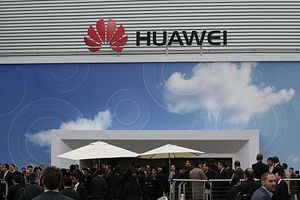Trans-Pacific View author Mercy Kuo regularly engages subject-matter experts, policy practitioners, and strategic thinkers across the globe for their diverse insights into U.S. Asia policy. This conversation with Timothy Heath, Senior International and Defense Research Analyst at RAND Corporation, is the 178th in “The Trans-Pacific View Insight Series.”
Assess the alleged linkages between Huawei and Iran via Skycom, a Huawei subsidiary.
Skycom appears to have served as an intermediary company for Huawei in its extensive dealings with Iran that violated U.S. sanctions. Documents show that Huawei officials authorized key financial transactions and business deals that transferred sanctioned computer equipment to Iran. The Skycom story is consistent with a pattern of behavior characteristic of Huawei and its risky business practices. The company has been accused of stealing technologies from rivals and skirting the edges of legal and ethical restrictions to make sales. Such tactics likely helped make the company as wildly successful as they are today, but they also carry huge risks if exposed, as we are seeing now. In sum, Huawei used Skycom as a cutout to conclude highly profitable deals in clear violation of U.S. sanctions.
Are U.S. national security concerns regarding Huawei’s intelligence-gathering capabilities valid? Explain.
U.S. security concerns regarding Huawei stem from the fact that it is a Chinese company that has extensive ties with the government and military. The company has many contracts with Chinese government and military authorities. This is true also of many U.S. tech companies. What is unique about Chinese companies is that each features a Communist Party cell whose job is to ensure the company complies with Beijing’s directives. Another distinctive feature is that Chinese laws require all companies, including Huawei, to cooperate with intelligence and security officials when necessary. In an authoritarian state where companies do not have the luxury of rejecting such demands or disclosing details to the media, as in Western countries, it may not be obvious to outside observers when such activity is undertaken. Thus, while no smoking gun exists of Huawei acting as enabler of Chinese state intelligence and security services, these distinctive features unavoidably bring risks to any involvement by Huawei in a country’s information networks.
Explain the impact of Huawei’s 5G dominance on U.S. defense strategy.
The internet volume, reliability, and speeds promised by 5G could dramatically expand the capacity of military forces to quickly integrate data on the battlefield and automate many processes. Huawei is already involved in helping the PLA [People’s Liberation Army, China’s military] adapt 5G for such purposes. A PLA that has successfully integrated 5G networks into its information networks and equipment may prove more flexible, faster, and adaptive on the battlefield and could also deploy larger numbers of autonomous platforms and weapons to lethal effect. U.S. defense planners will need to think through how to prepare for a Chinese military that could more completely perceive the battlefield and operate autonomous vehicles and weapons to carry out a multitude of battlefield tasks.
How is the U.S. military counterbalancing China’s integration of AI into military technology?
The race to incorporate artificial intelligence into military technology is well underway. Both sides have found it essential to tap into the technological advances in the civilian sector. In 2018, U.S. officials unveiled a Strategy for Artificial Intelligence that relies in part on cooperation with private technology companies, mirroring China’s own efforts to advance civil-military fusion of related technologies.
What are the potential U.S. national security implications of President Trump’s Executive Order to launch the “American Artificial Intelligence Initiative”?
Details remain scarce and the Executive Order did not identify new sources of funding, but the initiative prioritizes the building of military applications involving artificial intelligence. Relevant U.S. commercial entities and defense industries may see in coming years more government effort to coordinate the development of relevant technologies. As the results of the initiative bear fruit, the U.S. military is likely to show a higher level of automation in many of its processes, such as the collection and integration of intelligence data, management of logistics chains, command decision-making, and targeting. The U.S. military may also begin to feature a greater reliance on autonomous platforms in the air, land, and sea to carry out diverse tasks including surveillance, reconnaissance, supply, and combat. China’s investments in similar technologies suggest the PLA will likely also undergo similar developments. How the two militaries integrate AI and related technologies will profoundly shape thinking about the future of warfare for years to come.

































